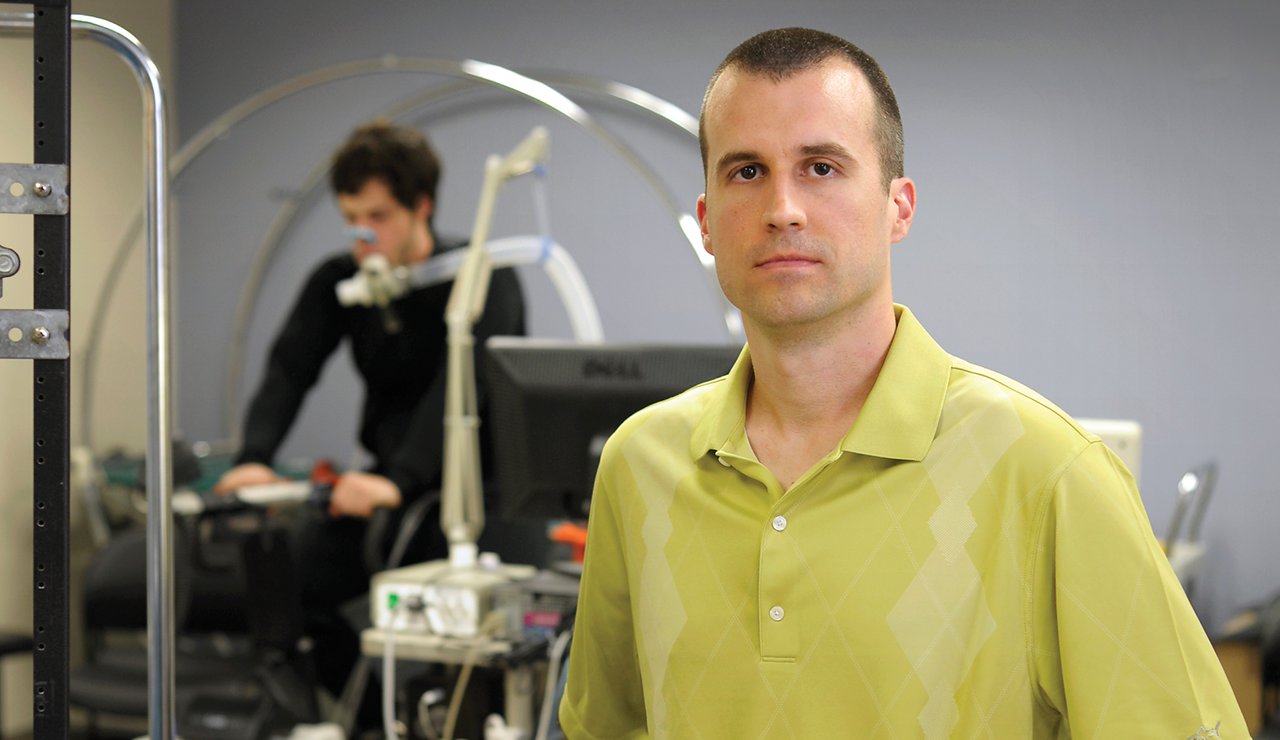
Faculty Rounds
Associate Professor David Keller is researching nerve activity in patients with MS.
A Show of Nerves
Research assesses nerve activity in multiple sclerosis patients
A UT Arlington kinesiology researcher and two colleagues made a major breakthrough while working to better understand blood pressure dysregulation and lightheadedness associated with multiple sclerosis (MS).
Associate Professor David Keller, along with Scott Davis of Southern Methodist University and Paul Fadel of the University of Missouri, successfully measured sympathetic nerve fiber activity—a function previously unmeasurable in MS patients.
“We were the first to report direct recordings of the electrical activity of the sympathetic nerve fibers important for blood flow and blood pressure regulation,” Dr. Keller says.
Backed by grants from the National Multiple Sclerosis Society and National Institutes of Health, he explores how the nerves under the control of the autonomic nervous system help keep blood pressure stable. It’s similar to the way a wall thermostat maintains room temperatures by sending electrical signals to turn an air conditioner on and off.
Using a technique called microneurography, Keller and his colleagues directly measured the electrical activity of nerves that signal blood vessels to constrict or relax.
“All three of us were able to combine forces and share our expertise and experience with the microneurographic technique,” Keller says. “We were able to systematically approach it in a way that others had not been successful in the past. We were the first to demonstrate it can be measured in this group. That was a big hurdle.”
“Reduced Spontaneous Sympathetic Nerve Activity in Multiple Sclerosis Patients” was published in the Journal of the Neurological Sciences in September 2014.
“What we show in our paper is that compared to healthy, age-matched control subjects, it appears there are marked differences in the activity of those nerves at rest in individuals with multiple sclerosis,” he says.
